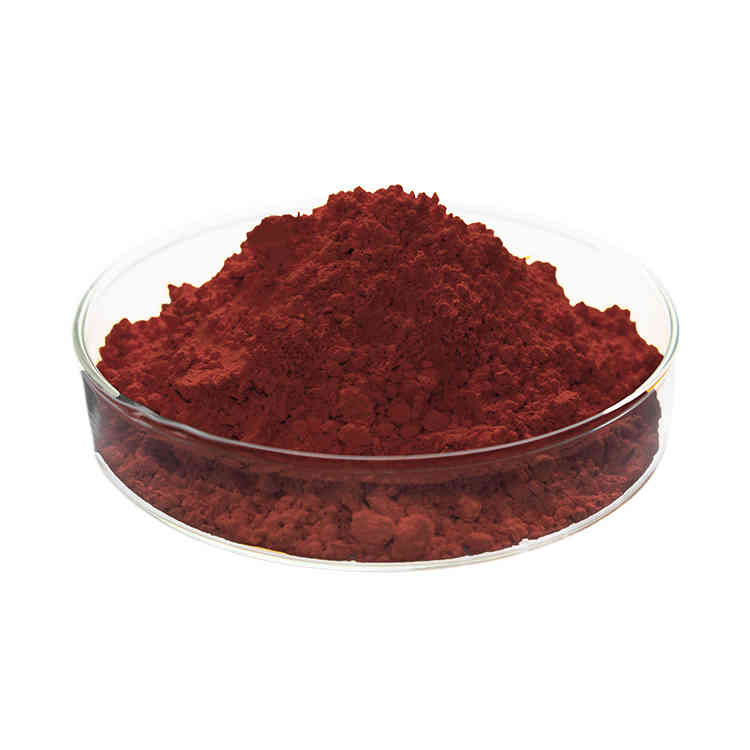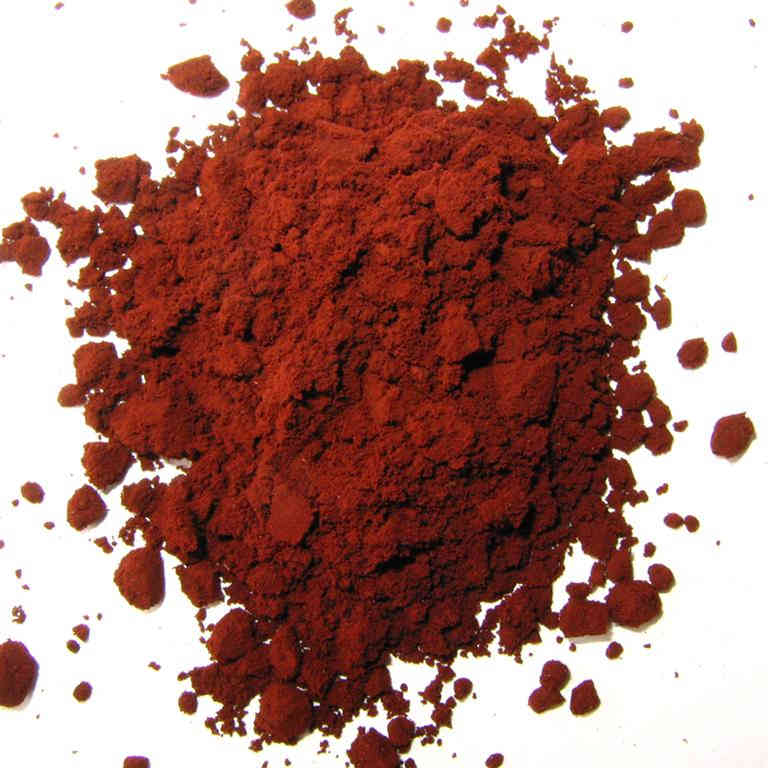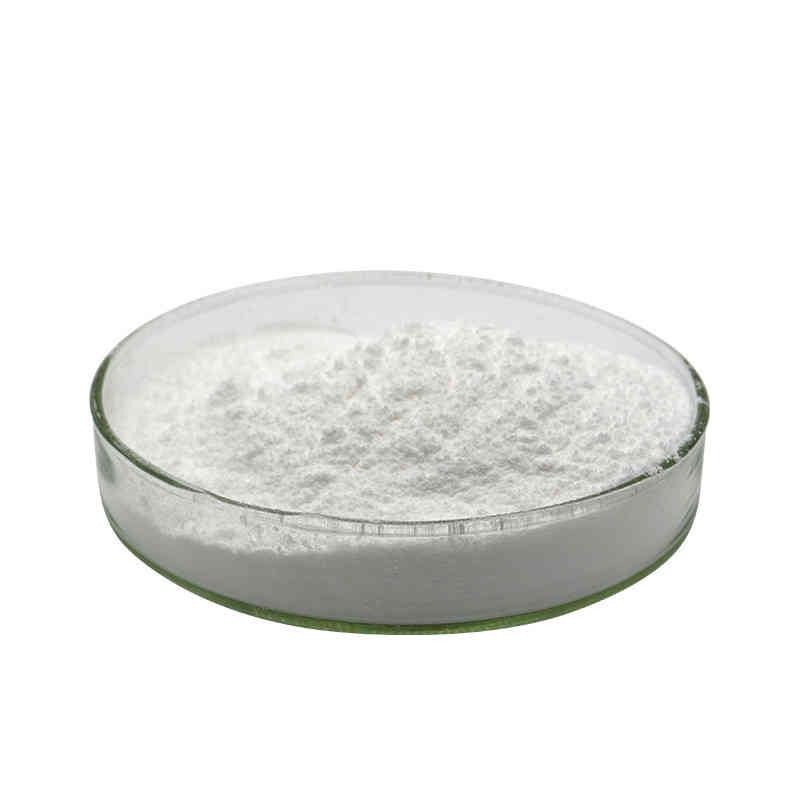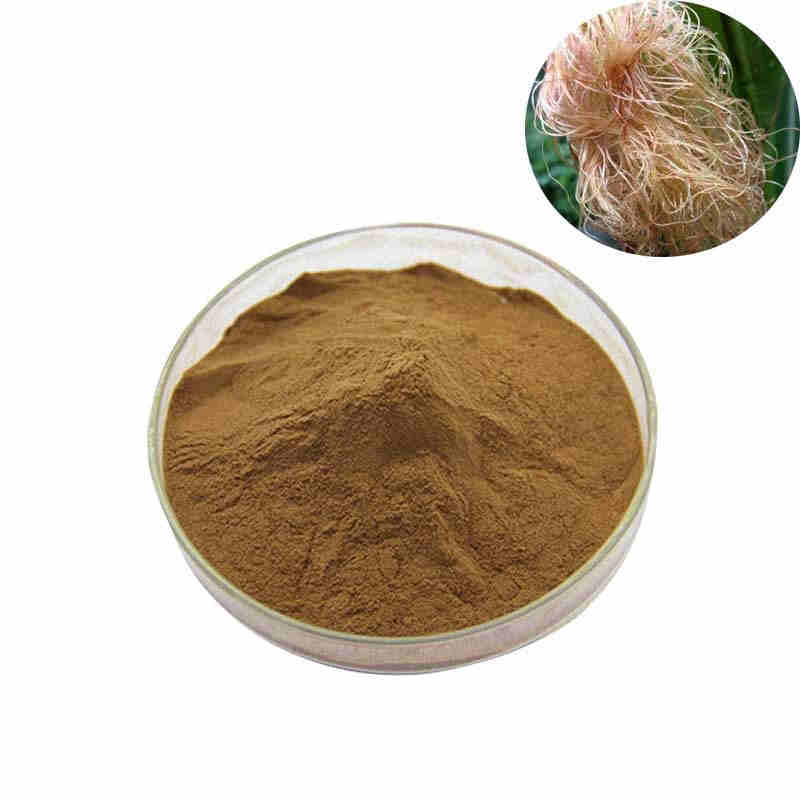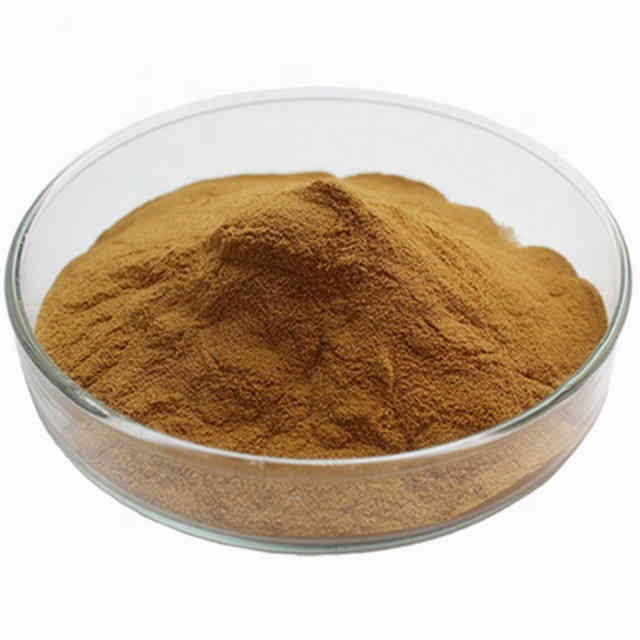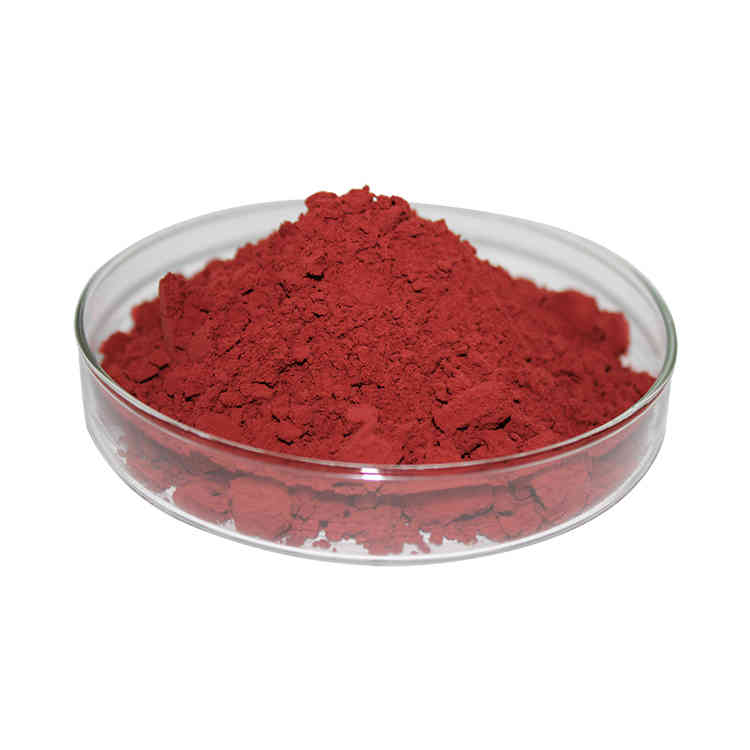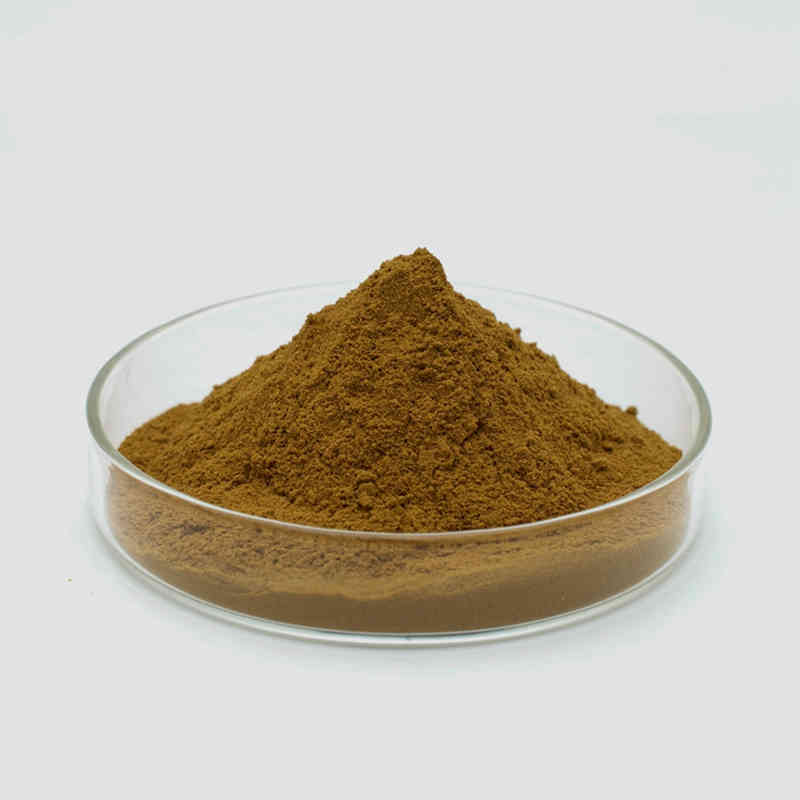Product Describe
Natural Astaxanthin Extract Powder
Product Name : Astaxanthin Powder
Specification : 1%, 1.5%, 2%, 2.5%
Latin name : Haematococcus pluvialis
Source : Whole Algae
Method of Production : High pressure CO2 Extraction and Simultaneous Refining
Physical status : Soft Reddish brown powder
Product Details
Astaxanthin Introduction:
Astaxanthin, a member of the carotenoid family, is an oxygenated red-orange pigment. Professor Basil Weedon was the first to map the structure of astaxanthin. Astaxanthin is found in microalgae, yeast, salmon, trout, shrimp, crustaceans, and other sources. However, Haematococcus pluvialis appears to be the best source of astaxanthin. Astaxanthin cannot be synthesized by human and it must be provided in the diet. Astaxanthin has been proven to be one of the most powerful anti-oxidants yet discovered. University study shows Astaxanthin to be up to 550 effective than Vitamin E and 4 times than lutein in various antioxidant capacities.It freely crosses the blood-brain and blood-retina barriers to provide powerful support for eye and nervous system health. Moreover, increasing evidence suggests that Astaxanthin has extremely useful characteristics in scavenging of active oxygen, immune stimulation, cancer prevention and so on. Preclinical studies demonstrate that astaxanthin is safe and no known side effects.
Natural astaxanthin is typically found in a range of marine life, specifically the red and pink coloured kind like salmon, lobsters, flamingos, and krill. These marine creatures all feed on algae that produces astaxanthin, making them pink. When stressed, this algae goes into survival mode, excreting astaxanthin to act as a ‘force field’ around it. The astaxanthin protects the algae from changes in its environment such as ultra-violet light, a lack of nutrition or a change in temperature. Natural astaxanthin allows these algae to live for over 40 years with no food or water in harsh environments.
Astaxanthin Product Information:
· Latin name: Haematococcus Pluvialis
· Product Name: Astaxanthin Powder
· Common name: Astaxanthin
· Active ingredients: Astaxanthin
· Product Specification:
Haematococcus Pluvialis Extract
Haematococcus Pluvialis P.E. Astaxanthin
Astaxanthin Powder
Astaxanthin Oil
Astaxanthin Oleoresin
·
2%, 3% ,5% Astaxanthin Powder
·
5%~10% Astaxanthin Oleoresin
·
·
CAS: 472-61-7 Astaxanthin
·
· Appearance: Red fine powder(Oil is also avaible)
· Test Method: HPLC/UV
· Most growing facilities use light to stress the algae into producing the astaxanthin so you’ll see outdoor grows in countries with plenty of sun and indoor grows with lights in those countries with less sun.
· Astaxanthin Introduction:
Astaxanthin, a member of the carotenoid family, is an oxygenated red-orange pigment. Professor Basil Weedon was the first to map the structure of astaxanthin. Astaxanthin is found in microalgae, yeast, salmon, trout, shrimp, crustaceans, and other sources. However, Haematococcus pluvialis appears to be the best source of astaxanthin. Astaxanthin cannot be synthesized by human and it must be provided in the diet. Astaxanthin has been proven to be one of the most powerful anti-oxidants yet discovered. University study shows Astaxanthin to be up to 550 effective than Vitamin E and 4 times than lutein in various antioxidant capacities.It freely crosses the blood-brain and blood-retina barriers to provide powerful support for eye and nervous system health. Moreover, increasing evidence suggests that Astaxanthin has extremely useful characteristics in scavenging of active oxygen, immune stimulation, cancer prevention and so on. Preclinical studies demonstrate that astaxanthin is safe and no known side effects.
Natural astaxanthin is typically found in a range of marine life, specifically the red and pink coloured kind like salmon, lobsters, flamingos, and krill. These marine creatures all feed on algae that produces astaxanthin, making them pink. When stressed, this algae goes into survival mode, excreting astaxanthin to act as a ‘force field’ around it. The astaxanthin protects the algae from changes in its environment such as ultra-violet light, a lack of nutrition or a change in temperature. Natural astaxanthin allows these algae to live for over 40 years with no food or water in harsh environments.
Astaxanthin Product Information:
· Latin name: Haematococcus Pluvialis
· Product Name: Astaxanthin Powder
· Common name: Astaxanthin
· Active ingredients: Astaxanthin
· Product Specification:
Haematococcus Pluvialis Extract
Haematococcus Pluvialis P.E. Astaxanthin
Astaxanthin Powder
Astaxanthin Oil
Astaxanthin Oleoresin
·
2%, 3% ,5% Astaxanthin Powder
·
5%~10% Astaxanthin Oleoresin
·
·
CAS: 472-61-7 Astaxanthin
·
· Appearance: Red fine powder(Oil is also avaible)
· Test Method: HPLC/UV
· Most growing facilities use light to stress the algae into producing the astaxanthin so you’ll see outdoor grows in countries with plenty of sun and indoor grows with lights in those countries with less sun.
· Astaxanthin Introduction:
Astaxanthin, a member of the carotenoid family, is an oxygenated red-orange pigment. Professor Basil Weedon was the first to map the structure of astaxanthin. Astaxanthin is found in microalgae, yeast, salmon, trout, shrimp, crustaceans, and other sources. However, Haematococcus pluvialis appears to be the best source of astaxanthin. Astaxanthin cannot be synthesized by human and it must be provided in the diet. Astaxanthin has been proven to be one of the most powerful anti-oxidants yet discovered. University study shows Astaxanthin to be up to 550 effective than Vitamin E and 4 times than lutein in various antioxidant capacities.It freely crosses the blood-brain and blood-retina barriers to provide powerful support for eye and nervous system health. Moreover, increasing evidence suggests that Astaxanthin has extremely useful characteristics in scavenging of active oxygen, immune stimulation, cancer prevention and so on. Preclinical studies demonstrate that astaxanthin is safe and no known side effects.
Natural astaxanthin is typically found in a range of marine life, specifically the red and pink coloured kind like salmon, lobsters, flamingos, and krill. These marine creatures all feed on algae that produces astaxanthin, making them pink. When stressed, this algae goes into survival mode, excreting astaxanthin to act as a ‘force field’ around it. The astaxanthin protects the algae from changes in its environment such as ultra-violet light, a lack of nutrition or a change in temperature. Natural astaxanthin allows these algae to live for over 40 years with no food or water in harsh environments.
Astaxanthin Product Information:
· Latin name: Haematococcus Pluvialis
· Product Name: Astaxanthin Powder
· Common name: Astaxanthin
· Active ingredients: Astaxanthin
· Product Specification:
Haematococcus Pluvialis Extract
Haematococcus Pluvialis P.E. Astaxanthin
Astaxanthin Powder
Astaxanthin Oil
Astaxanthin Oleoresin
·
2%, 3% ,5% Astaxanthin Powder
·
5%~10% Astaxanthin Oleoresin
·
·
CAS: 472-61-7 Astaxanthin
·
· Appearance: Red fine powder(Oil is also avaible)
· Test Method: HPLC/UV
· Most growing facilities use light to stress the algae into producing the astaxanthin so you’ll see outdoor grows in countries with plenty of sun and indoor grows with lights in those countries with less sun.
· Astaxanthin Introduction:
Astaxanthin, a member of the carotenoid family, is an oxygenated red-orange pigment. Professor Basil Weedon was the first to map the structure of astaxanthin. Astaxanthin is found in microalgae, yeast, salmon, trout, shrimp, crustaceans, and other sources. However, Haematococcus pluvialis appears to be the best source of astaxanthin. Astaxanthin cannot be synthesized by human and it must be provided in the diet. Astaxanthin has been proven to be one of the most powerful anti-oxidants yet discovered. University study shows Astaxanthin to be up to 550 effective than Vitamin E and 4 times than lutein in various antioxidant capacities.It freely crosses the blood-brain and blood-retina barriers to provide powerful support for eye and nervous system health. Moreover, increasing evidence suggests that Astaxanthin has extremely useful characteristics in scavenging of active oxygen, immune stimulation, cancer prevention and so on. Preclinical studies demonstrate that astaxanthin is safe and no known side effects.
Natural astaxanthin is typically found in a range of marine life, specifically the red and pink coloured kind like salmon, lobsters, flamingos, and krill. These marine creatures all feed on algae that produces astaxanthin, making them pink. When stressed, this algae goes into survival mode, excreting astaxanthin to act as a ‘force field’ around it. The astaxanthin protects the algae from changes in its environment such as ultra-violet light, a lack of nutrition or a change in temperature. Natural astaxanthin allows these algae to live for over 40 years with no food or water in harsh environments.
Astaxanthin Product Information:
· Latin name: Haematococcus Pluvialis
· Product Name: Astaxanthin Powder
· Common name: Astaxanthin
· Active ingredients: Astaxanthin
· Product Specification:
Haematococcus Pluvialis Extract
Haematococcus Pluvialis P.E. Astaxanthin
Astaxanthin Powder
Astaxanthin Oil
Astaxanthin Oleoresin
·
2%, 3% ,5% Astaxanthin Powder
·
5%~10% Astaxanthin Oleoresin
·
·
CAS: 472-61-7 Astaxanthin
·
· Appearance: Red fine powder(Oil is also avaible)
· Test Method: HPLC/UV
· Most growing facilities use light to stress the algae into producing the astaxanthin so you’ll see outdoor grows in countries with plenty of sun and indoor grows with lights in those countries with less sun.
·
Astaxanthin, a member of the carotenoid family, is an oxygenated red-orange pigment. Professor Basil Weedon was the first to map the structure of astaxanthin. Astaxanthin is found in microalgae, yeast, salmon, trout, shrimp, crustaceans, and other sources. However, Haematococcus pluvialis appears to be the best source of astaxanthin. Astaxanthin cannot be synthesized by human and it must be provided in the diet. Astaxanthin has been proven to be one of the most powerful anti-oxidants yet discovered. University study shows Astaxanthin to be up to 550 effective than Vitamin E and 4 times than lutein in various antioxidant capacities.It freely crosses the blood-brain and blood-retina barriers to provide powerful support for eye and nervous system health. Moreover, increasing evidence suggests that Astaxanthin has extremely useful characteristics in scavenging of active oxygen, immune stimulation, cancer prevention and so on. Preclinical studies demonstrate that astaxanthin is safe and no known side effects.
Natural astaxanthin is typically found in a range of marine life, specifically the red and pink coloured kind like salmon, lobsters, flamingos, and krill. These marine creatures all feed on algae that produces astaxanthin, making them pink. When stressed, this algae goes into survival mode, excreting astaxanthin to act as a ‘force field’ around it. The astaxanthin protects the algae from changes in its environment such as ultra-violet light, a lack of nutrition or a change in temperature. Natural astaxanthin allows these algae to live for over 40 years with no food or water in harsh environments.
Astaxanthin Product Information:
· Latin name: Haematococcus Pluvialis
· Product Name: Astaxanthin Powder
· Common name: Astaxanthin
· Active ingredients: Astaxanthin
· Product Specification:
Haematococcus Pluvialis Extract
Haematococcus Pluvialis P.E. Astaxanthin
Astaxanthin Powder
Astaxanthin Oil
Astaxanthin Oleoresin
·
2%, 3% ,5% Astaxanthin Powder
·
5%~10% Astaxanthin Oleoresin
·
·
CAS: 472-61-7 Astaxanthin
·
· Appearance: Red fine powder(Oil is also avaible)
· Test Method: HPLC/UV
Astaxanthin produced around the world
· As the popularity and demand for Astaxanthin grows, more growing facilities are popping up all around the world. These facilities all grow the algae haematoccus pluvialis in bulk and then extract astaxanthin from the mass algae they produce.· Most growing facilities use light to stress the algae into producing the astaxanthin so you’ll see outdoor grows in countries with plenty of sun and indoor grows with lights in those countries with less sun.
· Astaxanthin Introduction:
Astaxanthin, a member of the carotenoid family, is an oxygenated red-orange pigment. Professor Basil Weedon was the first to map the structure of astaxanthin. Astaxanthin is found in microalgae, yeast, salmon, trout, shrimp, crustaceans, and other sources. However, Haematococcus pluvialis appears to be the best source of astaxanthin. Astaxanthin cannot be synthesized by human and it must be provided in the diet. Astaxanthin has been proven to be one of the most powerful anti-oxidants yet discovered. University study shows Astaxanthin to be up to 550 effective than Vitamin E and 4 times than lutein in various antioxidant capacities.It freely crosses the blood-brain and blood-retina barriers to provide powerful support for eye and nervous system health. Moreover, increasing evidence suggests that Astaxanthin has extremely useful characteristics in scavenging of active oxygen, immune stimulation, cancer prevention and so on. Preclinical studies demonstrate that astaxanthin is safe and no known side effects.
Natural astaxanthin is typically found in a range of marine life, specifically the red and pink coloured kind like salmon, lobsters, flamingos, and krill. These marine creatures all feed on algae that produces astaxanthin, making them pink. When stressed, this algae goes into survival mode, excreting astaxanthin to act as a ‘force field’ around it. The astaxanthin protects the algae from changes in its environment such as ultra-violet light, a lack of nutrition or a change in temperature. Natural astaxanthin allows these algae to live for over 40 years with no food or water in harsh environments.
Astaxanthin Product Information:
· Latin name: Haematococcus Pluvialis
· Product Name: Astaxanthin Powder
· Common name: Astaxanthin
· Active ingredients: Astaxanthin
· Product Specification:
Haematococcus Pluvialis Extract
Haematococcus Pluvialis P.E. Astaxanthin
Astaxanthin Powder
Astaxanthin Oil
Astaxanthin Oleoresin
·
2%, 3% ,5% Astaxanthin Powder
·
5%~10% Astaxanthin Oleoresin
·
·
CAS: 472-61-7 Astaxanthin
·
· Appearance: Red fine powder(Oil is also avaible)
· Test Method: HPLC/UV
Astaxanthin produced around the world
· As the popularity and demand for Astaxanthin grows, more growing facilities are popping up all around the world. These facilities all grow the algae haematoccus pluvialis in bulk and then extract astaxanthin from the mass algae they produce.· Most growing facilities use light to stress the algae into producing the astaxanthin so you’ll see outdoor grows in countries with plenty of sun and indoor grows with lights in those countries with less sun.
· Astaxanthin Introduction:
Astaxanthin, a member of the carotenoid family, is an oxygenated red-orange pigment. Professor Basil Weedon was the first to map the structure of astaxanthin. Astaxanthin is found in microalgae, yeast, salmon, trout, shrimp, crustaceans, and other sources. However, Haematococcus pluvialis appears to be the best source of astaxanthin. Astaxanthin cannot be synthesized by human and it must be provided in the diet. Astaxanthin has been proven to be one of the most powerful anti-oxidants yet discovered. University study shows Astaxanthin to be up to 550 effective than Vitamin E and 4 times than lutein in various antioxidant capacities.It freely crosses the blood-brain and blood-retina barriers to provide powerful support for eye and nervous system health. Moreover, increasing evidence suggests that Astaxanthin has extremely useful characteristics in scavenging of active oxygen, immune stimulation, cancer prevention and so on. Preclinical studies demonstrate that astaxanthin is safe and no known side effects.
Natural astaxanthin is typically found in a range of marine life, specifically the red and pink coloured kind like salmon, lobsters, flamingos, and krill. These marine creatures all feed on algae that produces astaxanthin, making them pink. When stressed, this algae goes into survival mode, excreting astaxanthin to act as a ‘force field’ around it. The astaxanthin protects the algae from changes in its environment such as ultra-violet light, a lack of nutrition or a change in temperature. Natural astaxanthin allows these algae to live for over 40 years with no food or water in harsh environments.
Astaxanthin Product Information:
· Latin name: Haematococcus Pluvialis
· Product Name: Astaxanthin Powder
· Common name: Astaxanthin
· Active ingredients: Astaxanthin
· Product Specification:
Haematococcus Pluvialis Extract
Haematococcus Pluvialis P.E. Astaxanthin
Astaxanthin Powder
Astaxanthin Oil
Astaxanthin Oleoresin
·
2%, 3% ,5% Astaxanthin Powder
·
5%~10% Astaxanthin Oleoresin
·
·
CAS: 472-61-7 Astaxanthin
·
· Appearance: Red fine powder(Oil is also avaible)
· Test Method: HPLC/UV
Astaxanthin produced around the world
· As the popularity and demand for Astaxanthin grows, more growing facilities are popping up all around the world. These facilities all grow the algae haematoccus pluvialis in bulk and then extract astaxanthin from the mass algae they produce.· Most growing facilities use light to stress the algae into producing the astaxanthin so you’ll see outdoor grows in countries with plenty of sun and indoor grows with lights in those countries with less sun.
· Astaxanthin Introduction:
Astaxanthin, a member of the carotenoid family, is an oxygenated red-orange pigment. Professor Basil Weedon was the first to map the structure of astaxanthin. Astaxanthin is found in microalgae, yeast, salmon, trout, shrimp, crustaceans, and other sources. However, Haematococcus pluvialis appears to be the best source of astaxanthin. Astaxanthin cannot be synthesized by human and it must be provided in the diet. Astaxanthin has been proven to be one of the most powerful anti-oxidants yet discovered. University study shows Astaxanthin to be up to 550 effective than Vitamin E and 4 times than lutein in various antioxidant capacities.It freely crosses the blood-brain and blood-retina barriers to provide powerful support for eye and nervous system health. Moreover, increasing evidence suggests that Astaxanthin has extremely useful characteristics in scavenging of active oxygen, immune stimulation, cancer prevention and so on. Preclinical studies demonstrate that astaxanthin is safe and no known side effects.
Natural astaxanthin is typically found in a range of marine life, specifically the red and pink coloured kind like salmon, lobsters, flamingos, and krill. These marine creatures all feed on algae that produces astaxanthin, making them pink. When stressed, this algae goes into survival mode, excreting astaxanthin to act as a ‘force field’ around it. The astaxanthin protects the algae from changes in its environment such as ultra-violet light, a lack of nutrition or a change in temperature. Natural astaxanthin allows these algae to live for over 40 years with no food or water in harsh environments.
Astaxanthin Product Information:
· Latin name: Haematococcus Pluvialis
· Product Name: Astaxanthin Powder
· Common name: Astaxanthin
· Active ingredients: Astaxanthin
· Product Specification:
Haematococcus Pluvialis Extract
Haematococcus Pluvialis P.E. Astaxanthin
Astaxanthin Powder
Astaxanthin Oil
Astaxanthin Oleoresin
·
2%, 3% ,5% Astaxanthin Powder
·
5%~10% Astaxanthin Oleoresin
·
·
CAS: 472-61-7 Astaxanthin
·
· Appearance: Red fine powder(Oil is also avaible)
· Test Method: HPLC/UV
Astaxanthin produced around the world
· As the popularity and demand for Astaxanthin grows, more growing facilities are popping up all around the world. These facilities all grow the algae haematoccus pluvialis in bulk and then extract astaxanthin from the mass algae they produce.· Most growing facilities use light to stress the algae into producing the astaxanthin so you’ll see outdoor grows in countries with plenty of sun and indoor grows with lights in those countries with less sun.
·
Hot Tags: Natural Astaxanthin Extract Powder
Related Products
Inquiry







